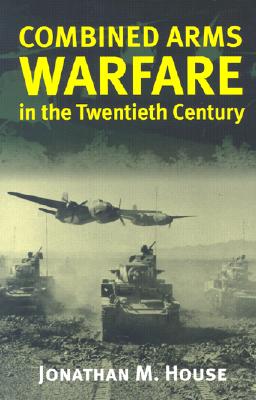Combined Arms Warfare in the Twentieth Century

Combined Arms Warfare in the Twentieth Century
For centuries, the world has witnessed the development and use of increasingly complex and powerful military systems and technologies. In the process, the "art of war" has truly become the art of combined arms warfare, in which infantry, artillery, air support, intelligence, and other key elements are all coordinated for maximum effect. Nowhere has this trend been more visible than in the history of twentieth-century warfare. Originally published as an essential "in-house" study for U.S. Army officers during the 1980s, this much revised and expanded edition remains the most complete study available on the subject. Rewritten with a much wider readership in mind, it both retains its enormous practical utility for military professionals and provides a valuable and appealing introduction for scholars and general readers. Jonathan House, author of the original work, brings the story of combined arms up to the present, covering among other things Desert Storm, the war in Chechnya, and the rise of "smart weapons" and related technologies. He traces the evolution of tactics, weapons, and organization in five major militaries--American, British, German, Russian, and French--over 100 years of warfare. Revealing both continuities and contrasts within and between these fighting forces, he also provides illuminating glimpses of Israeli and Japanese contributions to combined arms doctrine. Expanding his insightful analysis of the world wars and the wars in Korea and Vietnam, House also offers much new material focused on the post-Vietnam period. Throughout, he analyzes such issues as command-and-control, problems of highly centralized organizations, the development of special operations forces, advances in weapons technology--including ballistic and anti-ballistic missile systems--the trade-offs involved in using "heavy" versus "light" armed forces, and the enduring obstacles to effective cooperation between air and land forces. (His strong critique of the "air superiority" propaganda that came out of the Gulf War is sure to spark some heated debates.) Rigorously comparative, House's study addresses significant questions about how nations prepare for war, learn or don't learn its harsh lessons, and adapt to changing times and technologies. Unique in the annals of the literature on warfare, it will be the standard work on this subject for a long time to come.
Descrierea produsului
For centuries, the world has witnessed the development and use of increasingly complex and powerful military systems and technologies. In the process, the "art of war" has truly become the art of combined arms warfare, in which infantry, artillery, air support, intelligence, and other key elements are all coordinated for maximum effect. Nowhere has this trend been more visible than in the history of twentieth-century warfare. Originally published as an essential "in-house" study for U.S. Army officers during the 1980s, this much revised and expanded edition remains the most complete study available on the subject. Rewritten with a much wider readership in mind, it both retains its enormous practical utility for military professionals and provides a valuable and appealing introduction for scholars and general readers. Jonathan House, author of the original work, brings the story of combined arms up to the present, covering among other things Desert Storm, the war in Chechnya, and the rise of "smart weapons" and related technologies. He traces the evolution of tactics, weapons, and organization in five major militaries--American, British, German, Russian, and French--over 100 years of warfare. Revealing both continuities and contrasts within and between these fighting forces, he also provides illuminating glimpses of Israeli and Japanese contributions to combined arms doctrine. Expanding his insightful analysis of the world wars and the wars in Korea and Vietnam, House also offers much new material focused on the post-Vietnam period. Throughout, he analyzes such issues as command-and-control, problems of highly centralized organizations, the development of special operations forces, advances in weapons technology--including ballistic and anti-ballistic missile systems--the trade-offs involved in using "heavy" versus "light" armed forces, and the enduring obstacles to effective cooperation between air and land forces. (His strong critique of the "air superiority" propaganda that came out of the Gulf War is sure to spark some heated debates.) Rigorously comparative, House's study addresses significant questions about how nations prepare for war, learn or don't learn its harsh lessons, and adapt to changing times and technologies. Unique in the annals of the literature on warfare, it will be the standard work on this subject for a long time to come.
Detaliile produsului












